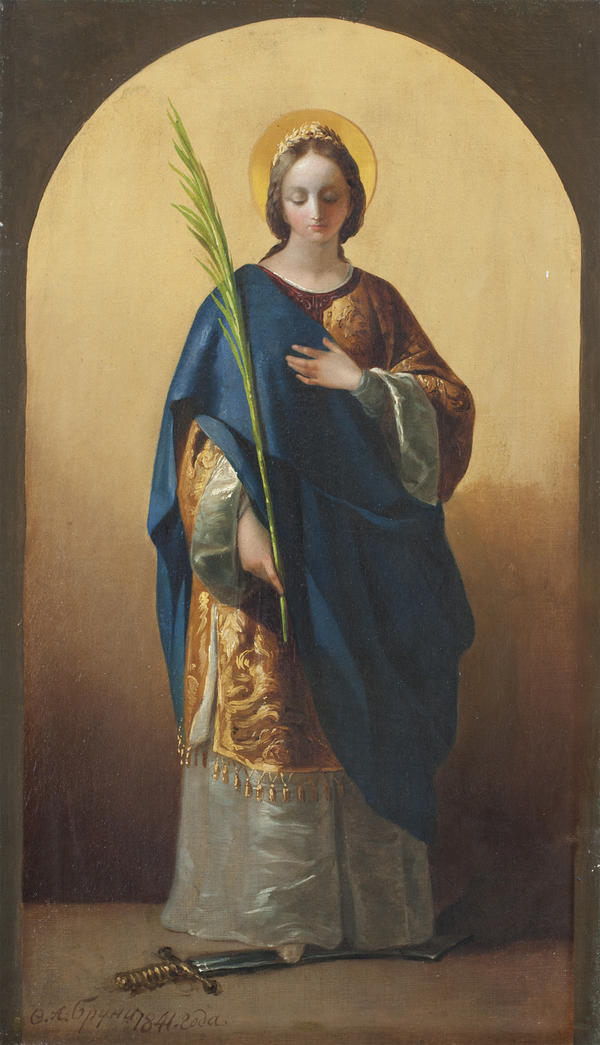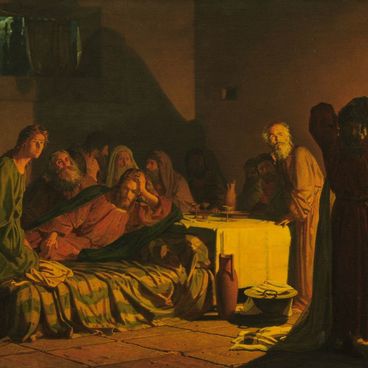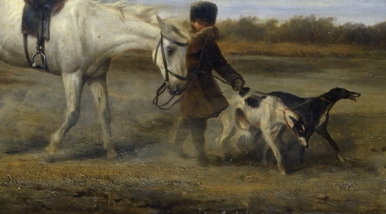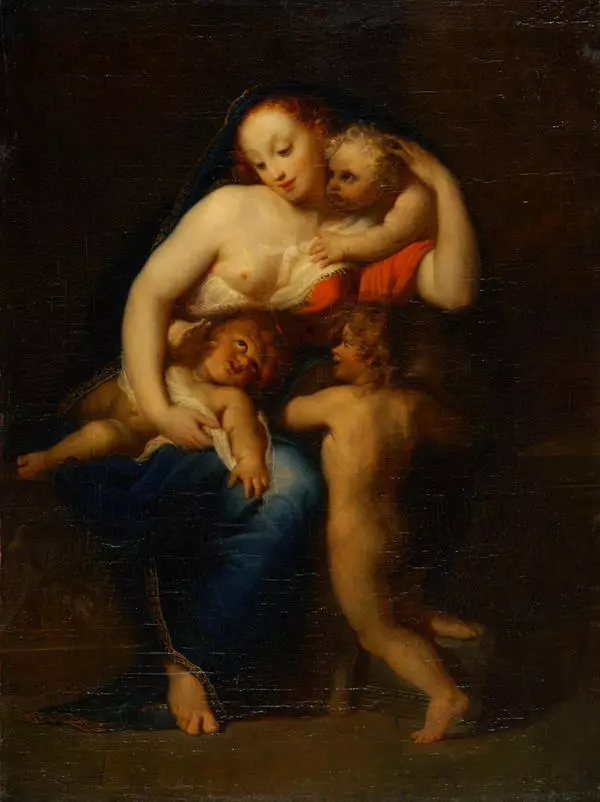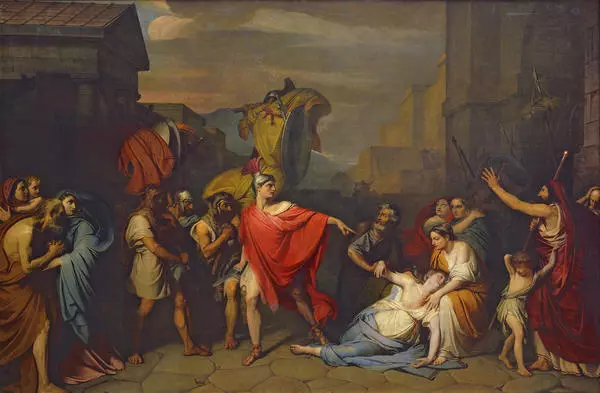Bruni painted the image of Great Martyr Saint Catherine for St.Catherine Church in Tsarskoye Selo, whose foundation stone was laid in 1835 by a decree of Emperor Nicholas II and that was built according to the design of architect Konstantin Thon. The temple architecture of that time was dominated by the Russian-Byzantine style. Bruni, who was brought up in the admiration of antiquity and marvelled by the art of the Italian Renaissance, kept looking for its own path in painting. It was seen in his turning to the traditions of Byzantine art.
The image of Saint Catherine was painted against the golden and terra-cotta background, which makes the face and clothes of the saint’s face and clothes glimmer warmly. It reminds us about the golden backgrounds of the mosaic of Ancient Rus’ and Byzantine. The colours of the piece are beautiful but the painter’s imagination turns to European rather than Ancient Rus’ icon painting. The image lacks sufficient and in-depth spirituality, which in inherent in Russian icon-painting. Relying on classical traditions, the painter seeks to find an ideal image of beauty. Her immaculate facial contours, harmonious facial features like those of the faces of Renaissance Madonnas, the eyes downcast and looking from under the lashes at the sword – the symbol of martyrdom. Legend has it that Saint Catherine was decapitated.
The saint wears luxury royal clothes, a gold embroidered dalmatic, her head is crowned with a gold tiara. Her left hand holds a dark blue cloak hanging down from a shoulder. These are ceremonial clothes and active dark blue and golden make the fragile figure of the saint look monumental. In her hands, there is a lulab, which symbolizes beauty and goodness. The sword, a symbol of her martyrdom, treads under her foot. Legend has it that Catherine of Alexandria was a noble and educated Christian girl, the daughter or Alexandria’s ruler. She vowed chastity, devoted herself to Christ. Catherine dared to oppose the rite of sacrifice to pagan gods, which was administered by Emperor Maxentius. In a dispute on faith, she won over 50 philosophers and converted them to Christianity. This made the Emperor commit her to trail, which sentences her to a gruesome execution – breaking on the wheel. But an angel came down from the sky to burn the wheel. Then the emperor ordered to decapitate Catherine.

